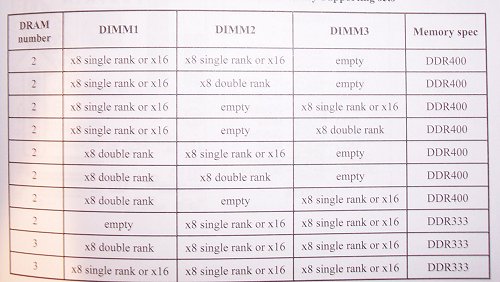Systems setup and notes
Here's a quick rundown of the test system should you wish to compare benchmark results with your own.Intel Pentium 4 3.2GHz ES 800FSB CPU
AMD Athlon 64 3200+ (2GHz)
ABIT KV8-MAX3 (K8T800, A16 BIOS)
ABIT IC7 i875P Canterwood (A18 BIOS, 30/10/03)
ABIT AI7 i865PE Springdale (A14 BIOS)
Other components
Hercules 3D Prophet Radeon 9800XT (412/730)
2 x 256MB Corsair XMS3500C2, run at 2-6-2-2 @ DDR400 for both ABIT Intel DC boards.
1 x 512MB OCZ PC3500 EL DDR, run at 2-6-2-2 @ DDR400 for the ABIT KV8-MAX3
Toshiba 8x DVD
IBM 120GXP 40GB hard drive
Dell P991 19" monitor
Software
Windows XP Professional SP1
DirectX9.0a
Intel 5.02.1002 chipset drivers
NVIDIA nForce3 3.13 drivers
ATI CATALYST 3.9 drivers and control pane
Pifast v41 to 10m places
Lame v3.92 MP3 encoding with Razor-Lame 1.15 front-end using U2's Pop album (607MB)
Kribi Bench 1.19
ScienceMark 2.0
Realstorm Raytracing benchmark 320x180x32
3DMark 2001SE v330
UT2003 Retail (Build 2225)
X2: The Threat - Rolling Demo
Comanche 4 benchmark
Serious Sam 2: Sierra De Chiapas Demo.
Quake 3 v1.30 HQ
Notes
It's an ABIT benefit with three boards utilising three different chipsets. Intel competition is provided by IC7 Canterwood and AI7 Springdale boards. Both are patched up to the latest available BIOSes, as was the KV8-MAX3.
Problems, or not ?
Benchmarks are usually carried out with 2 x 256MB Corsair XMS3500C2 modules run at 2-6-2-2 latencies and at DDR400 speeds. Due to the test Zalman 7000Cu blocking the first DIMM slot, both modules were entered into the two available slots, namely 2 and 3. Here's where the fun started. Whilst the board booted and ran for a short while, it never gained any kind of stability. Installing Windows XP SP1 went from being a routine exercise into a difficult task. Installation completed without a hitch with a single module in slot #2. A re-read of the manual showed that slots #2 and #3 cannot concurrently support DDR400 memory (max is DDR333), whilst slots #1 and #2 do (page 2-3 of the manual). An idiosyncratic DRAM controller seems to be the suspect here. I've taken the liberty of including what does and does not work.

In view of this fact and the appreciation that DIMM slot #1 wasn't usable with the Zalman cooler, a single 512MB module of OCZ PC3500 EL DDR was run with the usual 2-6-2-2 latencies. The problems here were self-inflicted. The KV8-MAX3 was stable during formal testing.
Benchmarks were carried out three times and the lowest and highest results were discarded. The running speed of each of the protagonists was as follows:
3208.3MHz - P4 3.2GHz / ABIT AI7 (Springdale i865PE)
3207.7MHz - P4 3.2GHz / ABIT IC7 (Canterwood i875)
2004.5MHz - Athlon 64 3200+ / ABIT KV8-MAX3 (VIA K8T800))
Overclocking
Overclocking on a K8T800 platform is full of potential obstacles. As you know, the Athlon 64 3200+ features an on-die memory controller which communicates with system RAM via a separate DRAM controller. The question is whether the DRAM controller is the initial limitation, or does it arise from the maximum stable clock obtainable by the CPU ?. One can eradicate the DRAM controller's possible intervention in overclocking by limiting the maximum frequency to, say, DDR333. However, that goes against our performance ethos. Then there's the added complication of having, apparently, unlocked PCI and AGP buses. One glimmer of light is the apparent unlocked nature of Athlon 64 3200+ CPUs. It's up to board manufacturers to implement multiplier adjustments, then.
The ABIT KV8-MAX3 managed at steady 226MHz with decent stability. Any higher and a number of factors may have impeded the boards' potential, including the unlocked buses.









